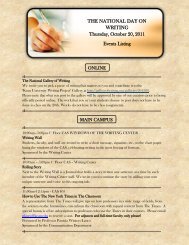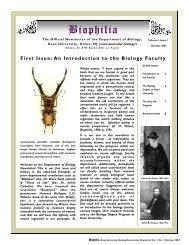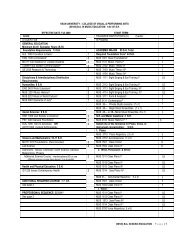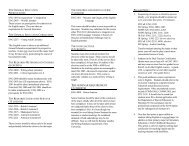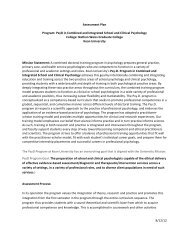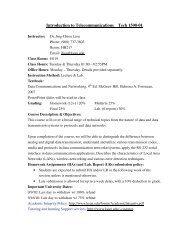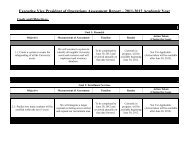GeorGe SeGal - Kean University
GeorGe SeGal - Kean University
GeorGe SeGal - Kean University
You also want an ePaper? Increase the reach of your titles
YUMPU automatically turns print PDFs into web optimized ePapers that Google loves.
VIII<br />
was making drawings and paintings. this is not a chicken and egg question. It is a fact. Drawing<br />
came first. And going way back, he dealt with many subjects; like a loving dad, he drew his sixyear-old<br />
daughter, and like a Pop artist of the 1960s, he drew ketchup bottles. George Segal was<br />
an artist of many moods, many interests and many ideas, and he always drew.<br />
the drawings in this exhibition are all of specific people, most untitled by the artist, with the<br />
name of the person rendered in parentheses. All of his subjects were friends, neighbors and family.<br />
However, some of the artist’s own family members insist that it does not matter who the subjects<br />
were in the drawings: “they were just people.” All well and good, but some are famous people<br />
such as Lucas Samaras and Marisol, whom he knew well. He would go to the movies with Abba<br />
Eban, the former Minister of Foreign Affairs of Israel. they were friends.<br />
I believe George Segal’s relationships with the people in his personal life were something he<br />
considered sacred. By incorporating friends and family into his art, the artist/shaman immortalized<br />
his subjects. I doubt it was a conscious effort. But this way of working shows up like a repeated<br />
pattern. In the studio there were many drawings of hands, Clasped Hands, the same pair of<br />
hands. Drawn over and over, they are his wife Helen’s hands. In this way, the drawings and the<br />
objects he made often embodied those he admired. Most of all, his art captured the spirit of those<br />
he cared for and loved most. George was always drawing. As his health began to decline and<br />
the physical activities associated with making sculpture were getting increasingly strenuous and<br />
fatiguing, photography and drawing became natural outlets for his creativity. Most of the drawings<br />
in this exhibition come from that time, 1998-1999.<br />
When I was selecting the works for this show a large beautiful drawing of Willie nelson caught<br />
my eye. I chose not to include that drawing since I imagined that the star quality of the personality<br />
could be a distraction from the exhibition. I include the story now because it tells of the funny and<br />
light-hearted side of the artist. George Segal did not know Willie nelson. He just liked his music<br />
and I bet he admired him as well. two of the major sculptures in this show are not titled after<br />
the models. one is simply called Woman on a Bench, the other, Seated Woman. that is how it<br />
usually was. throughout his career, most of Segal’s major sculptures had generic titles without<br />
the model’s name, but the drawings more often than not were more specific. Sometimes a generic<br />
title like “Bob” referred to a specific person whose first name was indeed Bob.<br />
Segal always did his art his own way. What worked for a specific situation was what he went<br />
with. Is that a contradiction? Perhaps it is for some people, but not to George Segal. Does it matter<br />
that the woman on the bench is Susan Kutliroff, his niece, or that the seated woman is the artist’s<br />
wife? For most of the world it is not going to matter. It is information that will just get in the way.<br />
But for those in George’s inner circle, they certainly delight in the likenesses they see in the various<br />
sculptures of the “anonymous people.” It is often their secret just who the specific individuals are.




